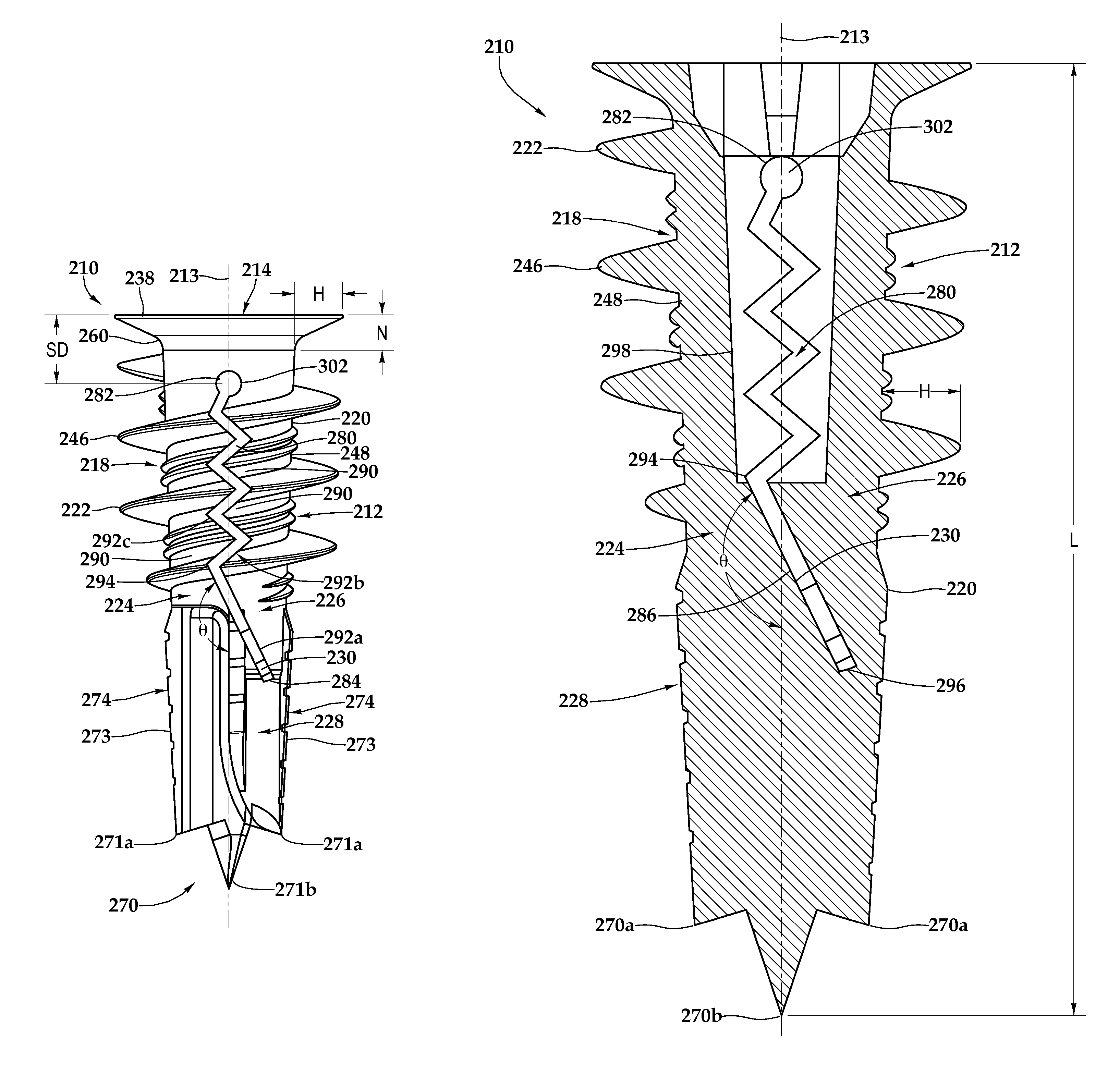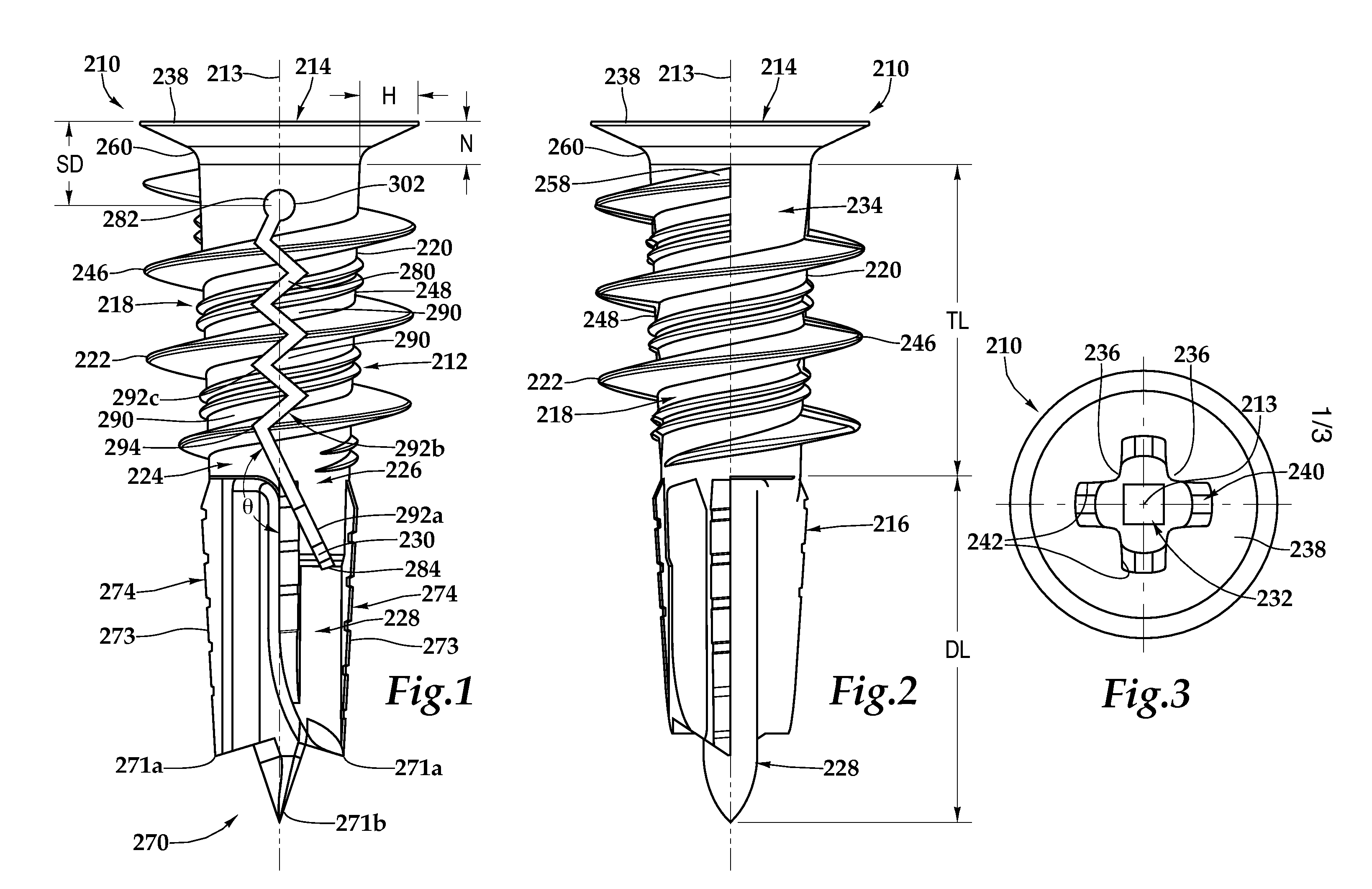Anchor
a self-drilling, anchor technology, applied in the direction of fastening means, dowels, mechanical equipment, etc., can solve the problems of anchor breaking during the installation of drywall, requiring a high installation torque for the internal fastener, and difficulty in mounting articles thereto, so as to achieve excellent results, increase the pullout strength of the anchor, and increase the strength
- Summary
- Abstract
- Description
- Claims
- Application Information
AI Technical Summary
Benefits of technology
Problems solved by technology
Method used
Image
Examples
Embodiment Construction
[0021]The description provided herein incorporates by reference the description provided in the commonly assigned U.S. patent application Ser. No. 11 / 290,212, filed one Nov. 30, 2005. In that application, certain characteristics of a desirable anchor were disclosed. These are shown in this application as well, but with different reference numerals, having either a 200 or 300 prefix, to help distinguish this case from previous ones, even though there may be intentional overlap of elements.
[0022]Whereas in a previous application, other dimensions were mentioned in regards to another embodiment, the embodiments presented in the current application may have differed in order to achieve increased pull-out strength.
[0023]Referring to FIGS. 1, 5 and 6, a self-drilling anchor 210 is shown for use in a friable material, such as drywall 201. Anchor 210 includes a body 212 having an axis 213, a flanged rear end 214 having torque transmitting surfaces 242, a drilling front end 216, an outer sur...
PUM
 Login to View More
Login to View More Abstract
Description
Claims
Application Information
 Login to View More
Login to View More - R&D
- Intellectual Property
- Life Sciences
- Materials
- Tech Scout
- Unparalleled Data Quality
- Higher Quality Content
- 60% Fewer Hallucinations
Browse by: Latest US Patents, China's latest patents, Technical Efficacy Thesaurus, Application Domain, Technology Topic, Popular Technical Reports.
© 2025 PatSnap. All rights reserved.Legal|Privacy policy|Modern Slavery Act Transparency Statement|Sitemap|About US| Contact US: help@patsnap.com



